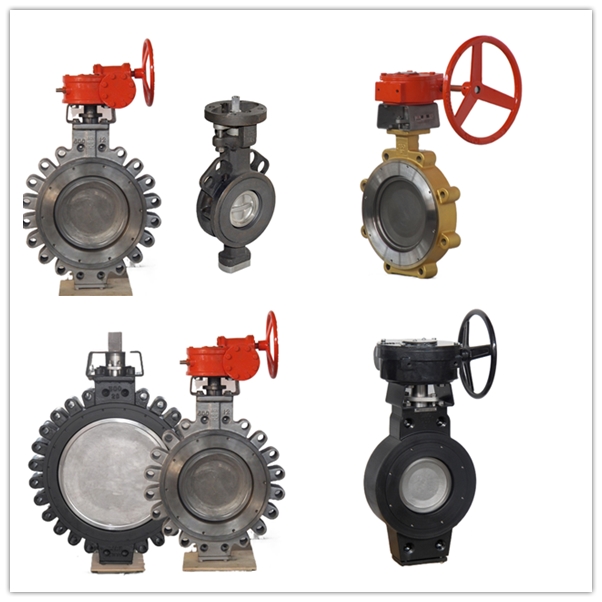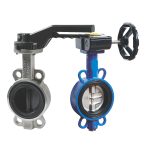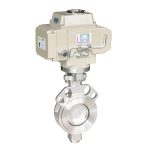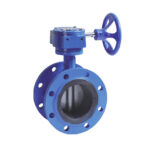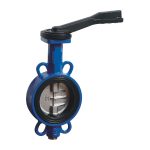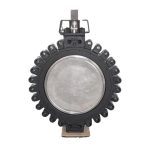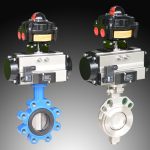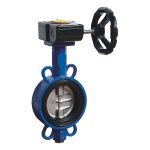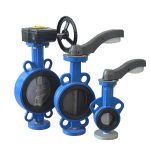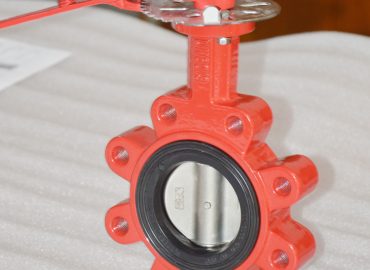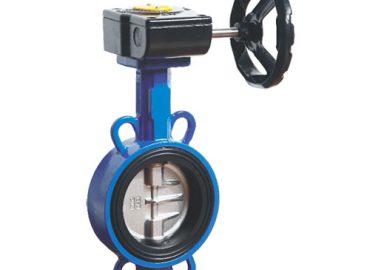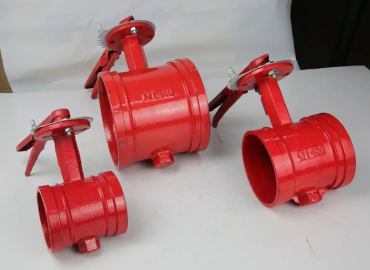Selecting the appropriate valve type for a pipeline system is crucial in ensuring optimal performance, safety, and efficiency. Among various valve types, lug type butterfly valves stand out due to their unique design and versatile applications. These valves offer numerous advantages, including ease of installation, bi-directional sealing capabilities, and high-pressure handling. In this blog post, we will explore the specific situations in which lug type butterfly valves are most recommended for use in pipeline systems, focusing on their key features and ideal applications to help guide you in making informed decisions when designing or upgrading your fluid flow control systems.
Introduction
Lug type butterfly valves are highly recommended for use in pipeline systems across various industries, thanks to their unique design, ease of installation, and versatile applications. These valves are particularly well-suited for dead-end service situations, where they can be installed at the end of a pipeline without the need for additional support or backup flanges. Their bi-directional sealing capabilities make them an excellent choice for fluid flow control in high-pressure systems, as they can effectively handle pressure from both directions while maintaining a tight seal. Additionally, lug type butterfly valves are commonly utilized in HVAC and fire protection systems, where their quick-acting and reliable performance is essential for maintaining comfortable temperatures and ensuring safety in case of emergencies. In chemical and industrial processing plants, lug type butterfly valves provide corrosion resistance and material compatibility, ensuring enhanced safety and process control when dealing with aggressive or corrosive fluids. When selecting a lug type butterfly valve for a pipeline system, it is crucial to consider factors such as pipeline size, pressure requirements, fluid type, and compatibility, as well as installation and maintenance considerations. By carefully evaluating these factors and consulting industry professionals, you can optimize the performance, safety, and efficiency of your pipeline system through the strategic use of lug type butterfly valves.
Brief overview of lug type butterfly valves
Lugged butterfly valve are a popular and versatile choice in the realm of flow control devices, catering to a wide range of applications across various industries. Characterized by their unique lug design, these valves feature a circular disc mounted on a rotating shaft that allows for precise regulation of fluid flow. When the disc is rotated perpendicular to the flow, it effectively blocks the passage, whereas when aligned parallel, it permits unrestricted flow. The lug design enables easy installation and removal without having to dismantle the entire pipeline, as each lug serves as a discrete attachment point for the adjacent flanges. Additionally, lug type butterfly valves offer bi-directional sealing capabilities, making them suitable for both shutoff and throttling purposes. With a compact design, high-pressure handling capacity, and compatibility with diverse fluids, lug type butterfly valves have earned their reputation as a reliable and efficient solution for fluid flow control systems.
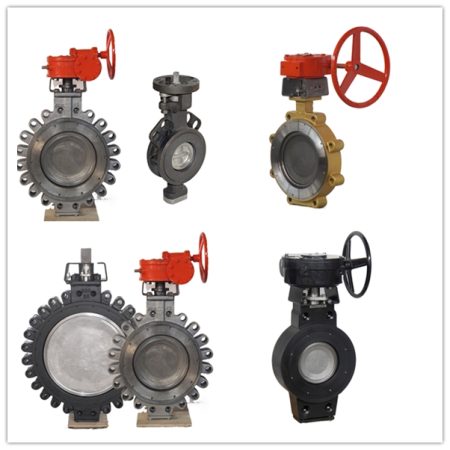
Importance of valve selection in pipeline systems
The importance of valve selection in pipeline systems cannot be overstated, as it plays a critical role in ensuring optimal performance, safety, and efficiency across various applications. With numerous valve types available, each with its unique features and capabilities, selecting the right valve for a specific application requires careful consideration of factors such as fluid type, pressure requirements, temperature ranges, and compatibility with other system components. A well-chosen valve contributes significantly to the overall effectiveness of a pipeline system by providing precise flow control, minimizing energy consumption, and reducing the potential for leaks or system failures. Moreover, proper valve selection can lead to reduced maintenance and operational costs while enhancing the longevity and reliability of the entire fluid flow control system. In essence, investing time and effort in valve selection is crucial to maximizing the performance and durability of pipeline systems across a wide array of industries.
Key features of lug type butterfly valves
Lug type butterfly valves boast a range of key features that make them an attractive choice for fluid flow control systems across various applications and industries. One of their defining characteristics is the unique lug design, which consists of protruding lugs around the valve body that enable easy installation and removal without dismantling the entire pipeline. This design allows for each lug to serve as an individual attachment point for adjacent flanges, simplifying maintenance procedures and reducing downtime. Another notable feature of lug type butterfly valves is their bi-directional sealing capabilities, which facilitate effective shutoff and throttling in both flow directions. This makes them suitable for a wide array of applications, including dead-end services and high-pressure systems. Furthermore, lug type butterfly valves are known for their compact design and lightweight construction, making them an ideal choice for space-constrained installations without compromising on performance. Their high-pressure handling capacity, coupled with compatibility with diverse fluids, ensures reliable operation even under demanding conditions. Lastly, lug type butterfly valves are available in various materials, such as stainless steel, ductile iron, and bronze, providing options for corrosion resistance and compatibility with different media. These key features collectively contribute to the versatility, efficiency, and dependability of lug type butterfly valves, making them a popular choice for fluid flow control systems in numerous industries.
Unique lug design
The unique lug design of lug type butterfly valves is a key feature that sets them apart from other valve types and contributes to their versatility and ease of use. The valve body is equipped with protruding lugs around its circumference, which serve as individual attachment points for adjacent flanges. This design enables the valve to be installed or removed without having to dismantle the entire pipeline, significantly simplifying maintenance procedures and reducing downtime. Additionally, the lug design allows for secure connections on both sides of the valve, providing stability and ensuring a tight seal even in high-pressure environments. The combination of easy installation, minimal maintenance requirements, and reliable performance makes the lug design an attractive feature for fluid flow control systems across a wide range of applications and industries.
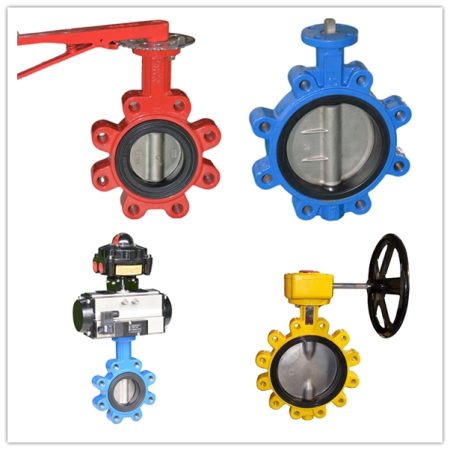
Ease of installation and maintenance
Ease of installation and maintenance is a crucial consideration when selecting valves for fluid flow control systems, as it directly impacts operational efficiency and the overall cost of system management. Lug type butterfly valves are particularly well-regarded for their ease of installation and maintenance, thanks to their unique lug design. With individual attachment points provided by the protruding lugs, these valves can be installed or removed without having to dismantle the entire pipeline, thereby minimizing downtime and labor costs. Furthermore, their compact and lightweight construction simplifies handling and reduces the space requirements for installation. The combination of these factors results in a valve that not only performs reliably but also streamlines the process of system maintenance, contributing to improved efficiency and reduced operational expenses across various industries and applications.
Bi-directional sealing capabilities
Bi-directional sealing capabilities are a standout feature of lug type butterfly valves, contributing to their versatility and suitability for a wide range of applications. This capability allows the valve to provide an effective seal and control fluid flow in both directions, making it ideal for shutoff and throttling purposes. In high-pressure systems or dead-end services, bi-directional sealing ensures that the valve maintains a tight seal regardless of the direction of pressure, enhancing safety and reliability. Furthermore, this feature enables lug type butterfly valves to be used in various industries and fluid flow control systems, including HVAC, fire protection, and chemical processing plants. By offering bi-directional sealing capabilities, lug type butterfly valves provide an efficient and dependable solution for managing fluid flow, ensuring optimal performance and safety across different applications.
High-pressure rating
A high-pressure rating is an essential attribute of lug type butterfly valves, making them suitable for use in demanding applications where fluid flow control is critical. This feature enables the valve to withstand and maintain a tight seal under high-pressure conditions, ensuring reliable performance and preventing leaks or system failures. The rugged construction and materials used in lug type butterfly valves, such as stainless steel or ductile iron, contribute to their ability to handle high pressures without compromising on durability or functionality. Industries like oil and gas, power generation, and water treatment, which typically involve high-pressure systems, benefit from the exceptional pressure handling capacity of these valves. By offering a high-pressure rating, lug type butterfly valves not only deliver reliable performance under challenging conditions but also provide peace of mind for operators, knowing that their fluid flow control systems are secure and efficient.
Recommended applications for lug type butterfly valves
Lug type butterfly valves are highly versatile and suitable for a wide range of applications across various industries, thanks to their unique design and features. Their ease of installation, bi-directional sealing capabilities, and high-pressure rating make them an ideal choice for numerous fluid flow control systems. In the water and wastewater treatment industry, lug type butterfly valves are commonly used for controlling and regulating the flow of water through pipelines, as well as isolating sections of the system for maintenance or repair. The oil and gas industry also benefits from their high-pressure handling capacity and compatibility with diverse fluids, making them suitable for controlling the flow of crude oil, natural gas, and refined products in both onshore and offshore facilities.
Moreover, lug type butterfly valves are widely employed in the power generation sector, where they play a crucial role in managing the flow of steam, water, and other fluids in cooling systems, boilers, and heat exchangers. The chemical and petrochemical industries utilize these valves for their corrosion-resistant properties and ability to handle aggressive media, ensuring safe and efficient fluid flow control in processes involving acids, alkalis, and other corrosive substances. HVAC systems, fire protection systems, and irrigation networks also benefit from the reliable performance and compact design of lug type butterfly valves, which allow for precise flow regulation and space-saving installations.
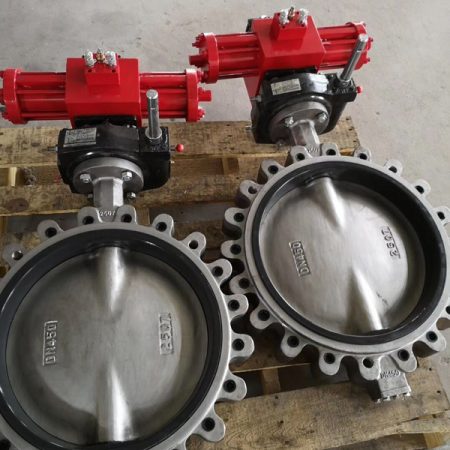
Furthermore, the food and beverage industry appreciates the sanitary versions of lug butterfly valves, which meet stringent hygiene standards and facilitate easy cleaning, ensuring product safety and quality. In addition to these specific applications, lug type butterfly valves can be employed in any situation where effective flow control, ease of maintenance, and reliable sealing are required. Their adaptability and robustness have made them a popular choice for fluid flow control systems in a multitude of industries and applications.
Dead-end service situations
Dead-end service situations are scenarios in which a valve is installed at the end of a pipeline or system, with no downstream piping or additional components. In these cases, the valve must be capable of handling full system pressure from one side while maintaining a tight seal to prevent leaks or system failures. Lug type butterfly valves are particularly well-suited for dead-end service applications, thanks to their bi-directional sealing capabilities and high-pressure rating. Their unique lug design allows for secure connections on both sides of the valve, providing stability and ensuring a reliable seal even when subjected to unidirectional pressure. As a result, lug type butterfly valves have become a preferred choice for managing fluid flow in dead-end service situations across various industries, providing an efficient and dependable solution that ensures the safety and integrity of the system.
Fluid flow control in high-pressure systems
Fluid flow control in high-pressure systems requires valves that can withstand extreme pressures while maintaining a tight seal and delivering reliable performance. Lug type butterfly valves are an excellent choice for such demanding applications, thanks to their robust construction, high-pressure rating, and bi-directional sealing capabilities. These features enable the valve to effectively handle and regulate fluid flow under high-pressure conditions without compromising on safety or functionality. The materials used in lug type butterfly valves, such as stainless steel or ductile iron, further contribute to their ability to endure high pressures and various types of fluids. Industries like oil and gas, power generation, and chemical processing, which often involve high-pressure systems, greatly benefit from the use of lug type butterfly valves for fluid flow control. By offering exceptional pressure handling capacity and a dependable seal, these valves help ensure the safe and efficient operation of high-pressure fluid flow systems across diverse applications.
HVAC and fire protection systems
HVAC (Heating, Ventilation, and Air Conditioning) and fire protection systems are critical components of modern building infrastructure, ensuring the comfort, safety, and well-being of occupants. These systems rely on efficient fluid flow control to regulate temperature, air quality, and pressure, as well as to manage the distribution of water or fire suppressant agents in emergency situations. Lug type butterfly valves play a crucial role in both HVAC and fire protection systems, thanks to their compact design, ease of installation, and reliable sealing capabilities. In HVAC systems, these valves enable precise regulation of heating and cooling fluids, contributing to energy-efficient climate control and improved indoor air quality. For fire protection systems, lug type butterfly valves ensure the proper flow of water or other fire suppressant agents through sprinkler networks, helping to mitigate the spread of fires and protect lives and property. By providing dependable fluid flow control in both HVAC and fire protection systems, lug type butterfly valves contribute significantly to the overall safety, efficiency, and comfort of modern buildings.
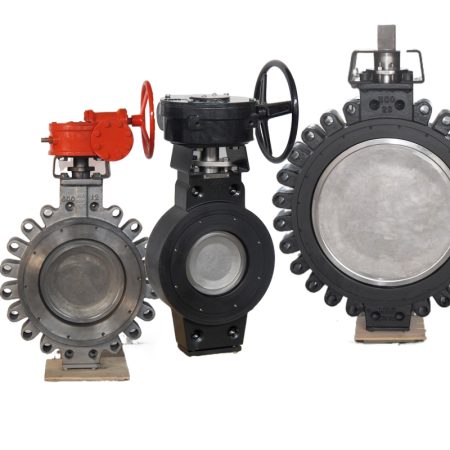
Chemical and industrial processing plants
Chemical and industrial processing plants are complex facilities that involve the handling, processing, and transportation of a wide variety of fluids, including hazardous and corrosive substances. In these environments, efficient and reliable fluid flow control is essential for ensuring safety, maintaining product quality, and optimizing operational efficiency. Lug type butterfly valves are an invaluable component in chemical and industrial processing plants, due to their robust construction, compatibility with diverse fluid types, and excellent sealing capabilities. These valves can withstand aggressive media, such as acids, alkalis, and other corrosive chemicals, making them ideal for maintaining secure and controlled fluid flow in demanding conditions. Additionally, their compact design and ease of maintenance contribute to minimizing downtime and reducing overall costs for plant operators. By offering exceptional performance and reliability in chemical and industrial processing plants, lug type butterfly valves play a vital role in supporting safe, efficient, and sustainable operations across a broad range of industries.
Factors to consider when selecting a lug type butterfly valve
When selecting a lug butterfly valve for a specific application, several factors must be considered to ensure optimal performance and compatibility. First, the pressure rating of the valve is crucial, as it must be able to withstand the maximum system pressure without compromising on safety or functionality. Second, the type of fluid being handled should be taken into account, as the valve materials must be compatible with the fluid’s properties to prevent corrosion and ensure a reliable seal. This includes considering factors such as temperature, chemical composition, and abrasiveness of the fluid.
Additionally, the required flow rate and level of control are important considerations, as they will directly impact the valve size and actuation method, whether manual, electric, pneumatic, or hydraulic. Another essential factor is the installation space and orientation, as the valve’s compact design and ease of installation can significantly affect the overall system layout and maintenance accessibility. Furthermore, industry-specific requirements, such as sanitary standards for the food and beverage industry or fire protection regulations, must be taken into account when selecting an appropriate lug type butterfly valve.
Lastly, the total cost of ownership should be evaluated, which includes not only the initial purchase price but also ongoing maintenance, replacement parts, and potential downtime costs. By carefully considering these factors and working with reputable manufacturers and suppliers, one can select the most suitable lug type butterfly valve that meets the unique demands of their application, ensuring reliable and efficient fluid flow control in various industries and systems.
Pipeline size and pressure requirements
Pipeline size and pressure requirements are critical factors that influence the selection and design of fluid flow control systems in various industries. The pipeline size, typically expressed as the diameter of the pipe, directly affects the flow rate and velocity of the fluid, which in turn impacts the choice of valves and other system components. A properly sized valve ensures efficient fluid flow control and minimizes energy consumption, turbulence, and potential wear on the components. Pressure requirements, on the other hand, pertain to the maximum operating pressure that the system must be able to withstand without compromising safety or performance. Valves, such as lug type butterfly valves, must have a pressure rating suitable for the specific application, taking into account factors like fluid type, temperature, and potential pressure fluctuations. By carefully considering pipeline size and pressure requirements when designing and selecting components for fluid flow control systems, engineers can optimize system performance, enhance safety, and reduce operational costs across a wide range of applications and industries.
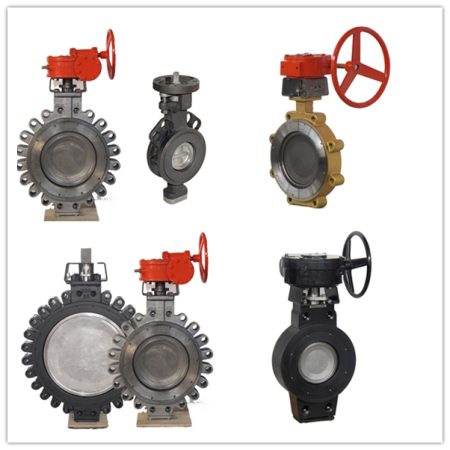
Fluid type and compatibility
Fluid type and compatibility are crucial considerations when designing and selecting components for fluid flow control systems, as they directly impact the performance, safety, and longevity of the system. Different fluids, such as water, oil, chemicals, and gases, exhibit varying properties, including temperature, viscosity, and corrosiveness, which can affect the choice of materials and sealing mechanisms in valves and other components. For instance, lug type butterfly valves must be constructed from materials that are compatible with the specific fluid being handled to prevent corrosion, leakage, and premature wear. This may involve selecting stainless steel or other corrosion-resistant alloys for aggressive chemical applications, or food-grade materials for sanitary environments. In addition, the sealing mechanism, such as elastomeric or PTFE seals, must provide a reliable and durable seal against the fluid’s properties. By carefully considering fluid type and compatibility when selecting components for fluid flow control systems, engineers can ensure optimal performance, extend the service life of the system, and maintain the safety and integrity of the fluid handling process across diverse industries and applications.
Installation and maintenance considerations
Installation and maintenance considerations play a vital role in the selection and design of fluid flow control systems, as they directly impact the overall efficiency, reliability, and cost-effectiveness of the system. When choosing components such as lug type butterfly valves, factors like ease of installation, accessibility for maintenance, and component durability should be taken into account. A compact design and simple installation process can save time and labor costs during system setup, while also allowing for more flexible system configurations. Additionally, easy access to valve components for routine inspection, cleaning, and replacement is essential for minimizing downtime and ensuring the long-term reliability of the system. This may involve selecting valves with features like replaceable seats or seals, which can simplify maintenance procedures and reduce the need for complete valve replacement. Furthermore, the use of high-quality materials and construction techniques can enhance the durability of the valve and other system components, reducing the frequency of maintenance interventions and lowering the total cost of ownership. By carefully considering installation and maintenance requirements when designing and selecting fluid flow control systems, engineers can optimize system performance, minimize operational disruptions, and maximize the return on investment for various applications and industries.
Cost-effectiveness and long-term performance
Cost-effectiveness and long-term performance are essential factors to consider when designing and selecting components for fluid flow control systems, as they directly influence the overall return on investment and operational success of the system. While the initial cost of components, such as lug type butterfly valves, is an important consideration, it is crucial to evaluate the total cost of ownership, which includes ongoing maintenance, replacement parts, and potential downtime costs. High-quality valves constructed from durable materials and featuring robust sealing mechanisms can provide reliable performance over extended periods, reducing maintenance interventions and minimizing the risk of system failures.
Furthermore, selecting energy-efficient components that optimize fluid flow and minimize pressure losses can contribute to reduced operational costs and improved system performance. By prioritizing cost-effectiveness and long-term performance when designing and selecting fluid flow control systems, engineers can maximize the return on investment and ensure the sustainability and competitiveness of their operations across a wide range of industries and applications. This approach not only benefits individual businesses but also contributes to the overall efficiency and responsible use of resources in various sectors, ultimately promoting environmental stewardship and sustainable development.
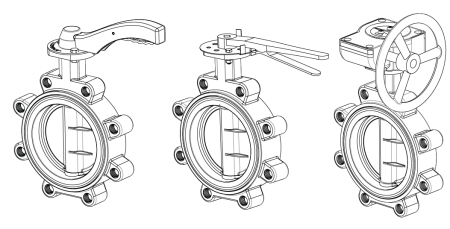
Conclusion
In conclusion, the design and selection of fluid flow control systems, such as those incorporating lug type butterfly valves, require a comprehensive understanding of various factors, including pressure requirements, pipeline size, fluid type and compatibility, installation and maintenance considerations, and cost-effectiveness and long-term performance. By thoroughly evaluating these aspects, engineers can optimize system performance, enhance safety, minimize operational costs, and maximize return on investment across diverse industries and applications. Furthermore, the use of high-quality components and materials, coupled with efficient system designs, contributes to the overall sustainability and competitiveness of operations, promoting responsible resource utilization and environmental stewardship.
It is essential for businesses and industries to collaborate with reputable manufacturers and suppliers to ensure the selection of reliable and durable components that meet or exceed industry-specific requirements and standards. This not only safeguards the integrity and safety of fluid handling processes but also fosters innovation and continuous improvement in fluid flow control technology. Ultimately, a holistic approach to designing and selecting fluid flow control systems, with a strong emphasis on cost-effectiveness and long-term performance, paves the way for sustainable and successful operations in various sectors, driving economic growth and fostering environmental sustainability for future generations.
Recap of situations where lug type butterfly valves are highly recommended
In recap, lug type butterfly valves are highly recommended in various situations where their unique features and capabilities provide significant advantages in fluid flow control systems. These valves are particularly well-suited for applications requiring bi-directional flow control, as they offer a tight shut-off mechanism that can handle pressure from both directions. This makes them ideal for use in industries such as water treatment, oil and gas, chemical processing, and HVAC systems. Lug type butterfly valves are also recommended for scenarios where easy disassembly and maintenance of the valve without interrupting the overall system operation is crucial, as their design allows for removal without disrupting adjacent piping connections. Additionally, these valves are beneficial in situations that demand compact and space-saving solutions, due to their streamlined design and reduced weight compared to other valve types. Lastly, lug type butterfly valves are an excellent choice for applications with stringent industry-specific requirements, such as sanitary standards or fire protection regulations, as they can be customized with appropriate materials and sealing mechanisms to meet these specific needs. By evaluating the unique demands of each application, engineers can determine when lug type butterfly valves are the optimal choice for reliable and efficient fluid flow control.

Importance of proper valve selection for optimal pipeline performance
The importance of proper valve selection for optimal pipeline performance cannot be overstated, as it directly influences the efficiency, safety, and reliability of fluid flow control systems across various industries. Selecting the right valve type, size, and material, as well as considering factors such as pressure requirements, fluid compatibility, and installation and maintenance needs, ensures that the system operates at its peak performance while minimizing energy consumption and potential wear on components. A well-chosen valve can prevent issues such as turbulence, cavitation, and leakage, which can lead to system disruptions, costly repairs, and even environmental hazards in certain applications. Furthermore, proper valve selection contributes to the long-term sustainability of operations by reducing maintenance interventions and prolonging the service life of the system, ultimately resulting in a lower total cost of ownership. By carefully considering the unique demands of each application and collaborating with reputable manufacturers and suppliers, engineers can make informed decisions when selecting valves, ensuring optimal pipeline performance and fostering the success and competitiveness of their operations.
Encouragement to consult industry professionals when choosing the right valve for specific applications
It is highly advisable to consult industry professionals when choosing the right valve for specific applications, as their expertise and experience can prove invaluable in navigating the complex landscape of fluid flow control systems. Industry professionals possess a deep understanding of various valve types, materials, and sealing mechanisms, as well as the unique requirements and challenges associated with different industries and applications. By seeking their guidance, engineers can gain insights into the most suitable valve solutions tailored to their specific needs, ensuring optimal system performance, safety, and reliability.
Furthermore, consulting industry professionals can help in staying up-to-date with the latest technological advancements and industry standards, which can contribute to the continuous improvement and innovation of fluid flow control systems. In addition, their knowledge of reliable manufacturers and suppliers can facilitate the selection of high-quality components that meet or exceed industry-specific requirements, ultimately enhancing the overall efficiency and cost-effectiveness of the system. By actively engaging with industry professionals, engineers can make well-informed decisions when selecting valves, fostering the success and competitiveness of their operations, and ensuring the long-term sustainability and growth of their respective industries.


